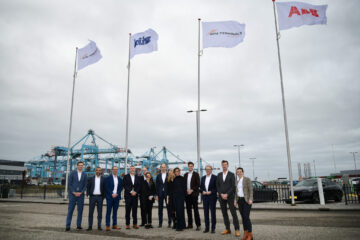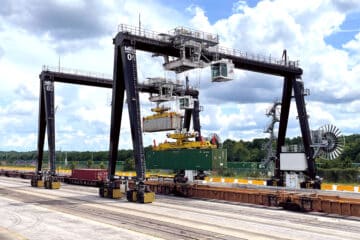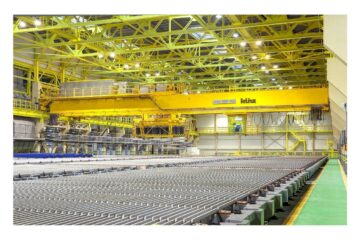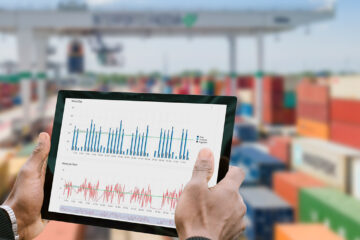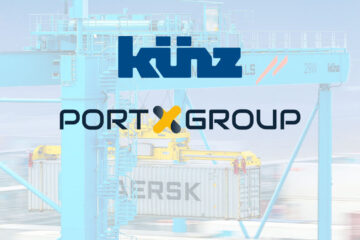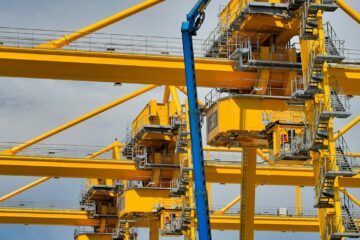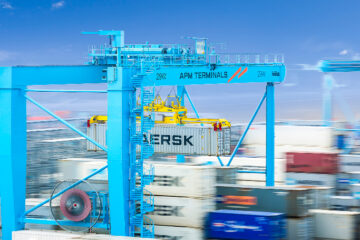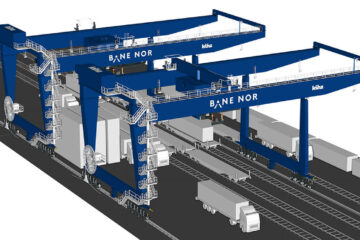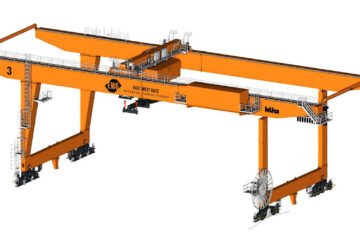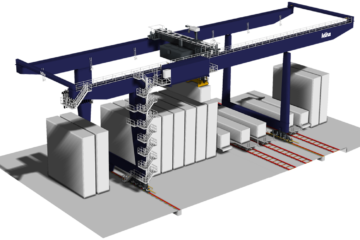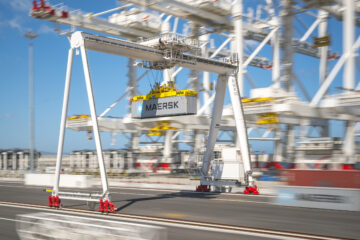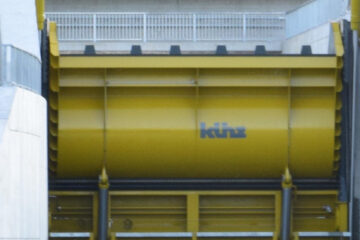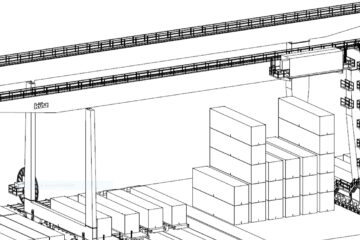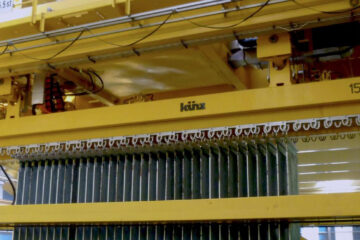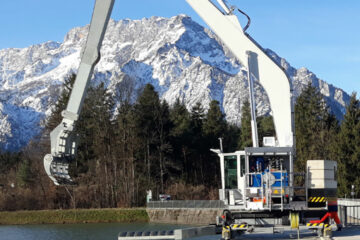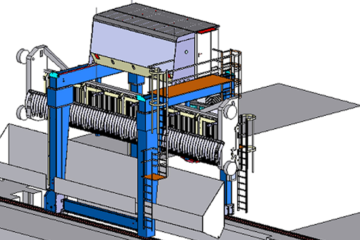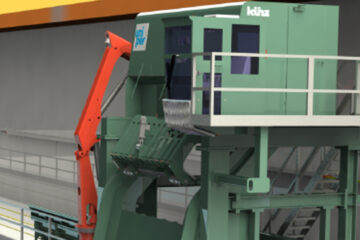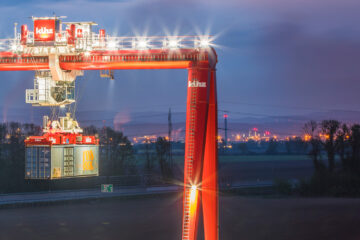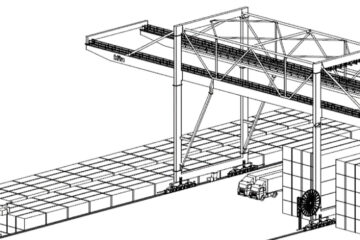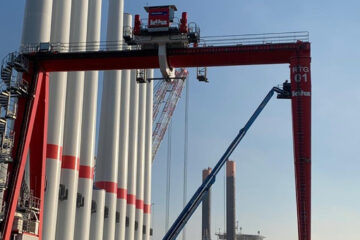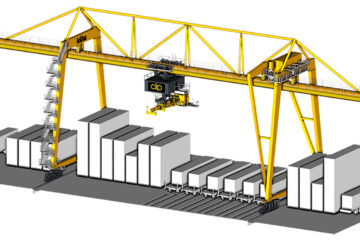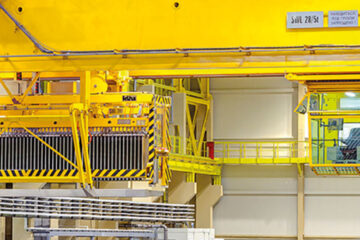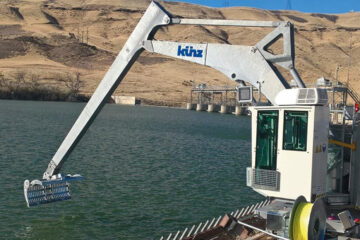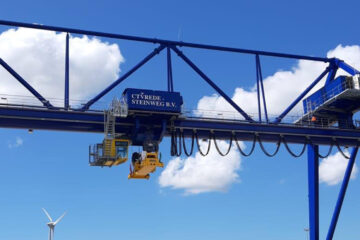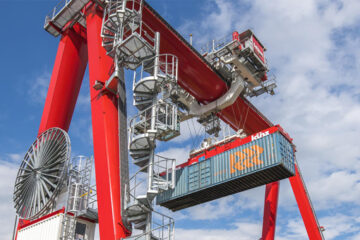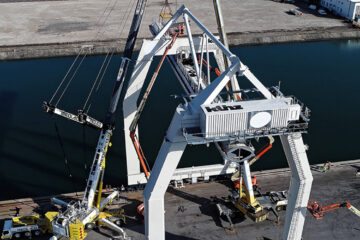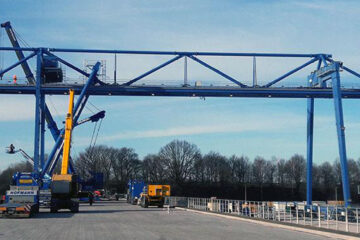If the EU wants to move to zero-emission mobility, rail freight has a huge role to play. This has been iterated by the rail freight industry since the Green Deal echoed these ambitions. But equally important is the role of the points where everything comes together: the terminal. Kuenz is aware of its role and has put everything at work to make the most sustainable cranes for these terminals.
“There are many ways to a more sustainable crane”, starts off Philipp Gmeiner, product manager of Crane Systems at Kuenz. “We are glad that fully electrical power supply and energy recuperation is already state of the art regarding RMGs in European container terminals. Energy recuperation means that energy which results from lowering or braking is not wasted but fed back to the crane system or the power grid.”
What is more?
Apart from this, Kuenz does many other things to make the cranes more sustainable. “It starts with choosing a suitable crane concept in close collaboration with the customer and operator. It makes an analysis of the whole structure by experienced engineers, with the latest calculation and simulation methods. Smart use of today’s computational power makes it possible to analyse and simulate the structure in detail”, Gmeiner explains. “That leads to optimized weight of components and still secures high performance and high stiffness of the structure.”
Kuenz is using the latest production methods and welding robots where suitable. In order to optimise the supply chain, it favours regional suppliers to keep transport distance to its production sites to a minimum, and the same accounts for the transport distance between productions sites and customers. “Our core market is container cranes in Europe, which perfectly suits to the location of our production sites in Austria and Slovakia and therefore reduces transport emissions and time”.
Aerodynamic crane design
The aerodynamic crane design is relatively new. The main feature is the aerodynamic shape of the main girder, the top part of the crane that is directly exposed to wind. And wind is an element that increases the energy consumption of a crane. It is therefore important that the effect of wind on a crane is reduced as much as possible, explains Gmeiner.
“The effective wind surface on an aerodynamic crane is reduced by around 50 per cent in comparison to a conventional box girder design. This effect has been calculated and simulated with the help of CFD simulations (Computational Fluid Dynamics) and wind tunnel experiments, something that is only possible with today’s computational power. As a result, the power demand of the gantry drives is reduced by up to 35 per cent, which leads to a lower energy consumption of the cranes.”
The revolutionary design is in use on Kuenz’ rail mounted gantry cranes (RMGs), automated stacking cranes (ASCs) and rubber tired gantry cranes (RTGs). But it is not only the aerodynamic girder that has been adjusted. The design has around 15 per cent less crane weight in comparison to a conventional double box girder design, and it has reduced dynamic wheel loads. “The supporting structure under the crane tracks can be built easier and more sustainably – meaning lower wheel loads can reduce the amount and time of the construction work as well as the amount of concrete and steel”, says Gmeiner.
Electric power supply
In general, electric power supply is the best choice, and in combination with recuperation the most sustainable solution for every crane, the crane manufacturer explains. As already stated, electrical power supply is standard for RMGs (mostly cable reel systems). Moreover, it is also the most sustainable solution for RTGs, either with a cable reel system or a conductor rail system.”
Therefore, Kuenz helps customers to reach their emission targets by converting terminals with conventional fuel driven RTGs into sustainable terminals with fully electric RTGs. In cases where electrical power supply is not possible yet, Kuenz offers an innovative Hybrid Solution, which has a smaller diesel engine and an energy storage system. “This is significantly better in terms of fuel consumption and carbon emissions than an operation with fully diesel-powered RTGs”, says Gmeiner.
“Also here the recuperation technology is used to charge the energy storage system. Depending on utilisation, this results in around 50 to 70 per cent fuel savings in comparison to a RTG with a constant-speed engine. Per year, this saves more than 200 tons of CO2 emissions per RTG.”
At which cost?
The industry of today is ready for solutions that contribute to less CO2 emissions, more and more companies are making a prerequisite when they engage in new business. But, as this is a relatively new development, information about how this can be done is not yet known to all. Nevertheless, terminals and their equipment are an essential chain in this development.
What is also good to know, Gmeiner believes, is that opting for a sustainable craning solution does not necessarily mean increased costs. “Often, making systems more sustainable makes them more expensive. But in the case of electrical or hybrid power supply, weight optimisation and aerodynamic design, this is not necessarily true. These are sustainable product features that reduce operational costs and environmental impact at the same time. So these two effects do not exclude each other.”
Source: Railfreight.com

